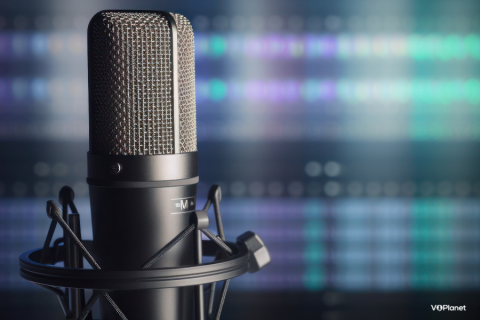
A common question for voice over beginners is whether you should record your voice overs in mono or stereo. In this beginner's guide, we'll explore the fundamentals of mono and stereo recording for voice overs, discuss the advantages and disadvantages of each approach, and provide practical tips to help you make an informed decision based on your specific needs and preferences.
What Is Mono Recording?
Mono, short for monaural or monophonic, refers to audio that is recorded and reproduced using a single channel. In mono recording, the audio signal is captured by a single microphone and is then transmitted or stored as a single audio track. This means that all sound information is combined into a single channel, resulting in a unified audio experience with no spatial separation between different elements of the sound.
Mono recording is a straightforward and efficient method of capturing audio, particularly for voice overs and other types of spoken word content. By using a single microphone to capture sound, mono recording simplifies the recording process and ensures that all audio is captured with consistent levels and clarity.
One of the primary advantages of mono recording is its compatibility and versatility. Mono audio can be played back on a wide range of playback systems, including mono speakers, headphones, and mobile devices. This makes mono recording ideal for situations where compatibility with various playback devices is important, such as podcasting, radio broadcasting, and telephony systems.
Overall, mono recording offers a simple yet effective approach to capturing audio for voice overs and other types of spoken word content. Its compatibility, efficiency, and reliability make it a popular choice for beginners and experienced audio professionals alike.
Learn More: Voice Over Demo Dos and Don'ts
What Is Stereo Recording?
Stereo recording involves capturing audio using two separate channels, typically with two microphones positioned strategically to simulate the spatial perception of sound. In stereo recording, each microphone captures sound from a slightly different perspective, allowing for the creation of a sense of depth and dimensionality in the audio.
Stereo recording offers several advantages over mono recording, particularly when it comes to capturing immersive and dynamic audio experiences. By utilizing two microphones, stereo recording can capture the spatial characteristics of sound, including directionality, distance, and ambient acoustics. This allows for a more realistic and immersive listening experience, particularly when reproducing audio in environments with stereo playback systems, such as home theaters, car stereos, and headphones.
Stereo recording also offers greater flexibility and creative control over the final audio mix. By capturing sound using multiple channels, stereo recording allows for independent processing and manipulation of each channel during post-production. This enables audio engineers to adjust the balance, panning, and spatialization of individual elements within the audio mix, resulting in a professional-sounding production.
Learn More About Voice Overs: Do I Need a Pop Filter for Voice Overs?
Should a Voice Over Be Mono or Stereo?
You should record your voice overs in mono. Recording your voice overs in mono is not only practical but also aligns with industry standards and best practices. Mono recording simplifies the recording process by capturing all audio with a single microphone and storing it as a single audio track, ensuring consistency and coherence in the audio. This approach has become the voice over industry standard due to its compatibility, and efficiency. Mono recording also helps minimize file size and bandwidth requirements, making it easier to manage and distribute your audio files.
By adhering to the industry standard of mono recording, you can ensure that your audio files meet the expectations of voice buyers and audiences alike, while also simplifying your workflow and optimizing the quality of your voice overs.
Want to join our voice over team? Find out more about how to find voice over jobs.
You may also enjoy: What Do You Call Someone Who Does Voice Overs?




 VOPlanet Blog
VOPlanet Blog